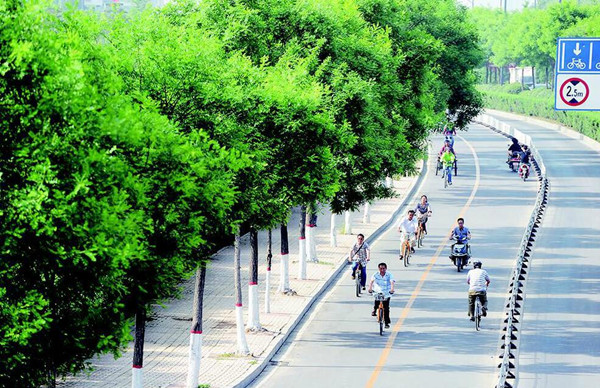
People ride bicycles in Taiyuan city. [Photo/tynews.com.cn]
Taiyuan city, capital of North China's Shanxi province, advocated low-carbon travel and environmentally sustainable lifestyles during the 13th Five-Year Plan period (2016-20), with a green travel system basically formed.
In April 2020, Taiyuan launched the intelligent bus dispatching system, which improved the bus system's efficiency. At present, there are 3,520 buses in the city, of which 1,400 are fully electric vehicles.
To meet the diverse travel needs of citizens and tourists, Taiyuan opened transport services such as community buses, customized buses and dedicated tourist routes.
In terms of taxis, in 2016, Taiyuan became China's first city with a fully electric fleet of cabs on the road.
These electric taxis were equipped with intelligent terminals with many new functions, making it more convenient for locals to travel by taxi and reducing air pollution.
Public bicycles have become another major way for Taiyuan people to travel. Around 1.5 million people in the city held public bicycle rental cards during the past five years.
As of November 2020, a total of 893.2 million bike rides had been taken in Taiyuan. The highest number of rides in a single day was 568,500, and a free rental rate of 99.75 percent has been achieved, making the city the first in the nation for its bicycle turnover rate, single-day bicycle rental rate and free rental rate.
Taiyuan has also committed to promoting the construction of the urban slow-traffic system, with a 229.4-kilometer cycling track built to connect the West and East mountains and a 66-km special bicycle lane along the Fenhe River under construction.
During the five year period, walking, cycling and public transportation accounted for more than 80 percent of the total travel choices.
With the recent opening of Taiyuan Metro Line 2, bus routes will be adjusted and optimized to form a seamless connection with the city's subway system. Going forward, Taiyuan will continue to attract more people to participate in green travel.
